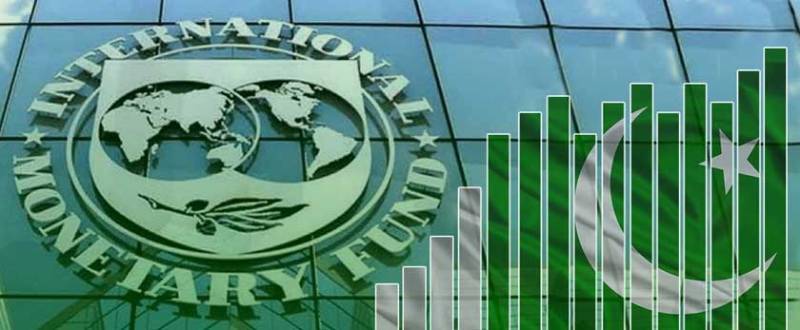IMF representative says an in-person Fund mission is scheduled to visit Islamabad next week n Pak rupee posts biggest single-day decline of almost 10pc n Traded at Rs255.43 per dollar.
ISLAMABAD - The International Monetary Fund (IMF) mission will visit Islamabad by the end of this month to continue discussions under the 9th Extended Fund Facility (EFF) review as Pakistan has agreed to accept all conditions on the subject.
“At the request of the authorities, an in-person Fund mission is scheduled to visit Islamabad on January 31 February 9,” IMF Resident Representative in Pakistan Esther Perez Ruiz told The Nation on Thursday.
She further said that the mission will focus on policies to restore domestic and external sustainability, including to strengthen the fiscal position with durable and high quality measures while supporting the vulnerable and those affected by the floods; restore the viability of the power sector and reverse the continued accumulation of circular debt; and re-establish the proper functioning of the FX market, allowing the exchange rate to clear the FX shortage.
Stronger policy efforts and reforms are critical to reduce the current elevated uncertainty that weighs on the outlook, strengthen Pakistan’s resilience, and obtain financing support from official partners and the markets that is vital for Pakistan’s sustainable development.The IMF team would visit Pakistan at the time when country’s foreign exchange reserves have fallen to an alarming level. “During the week ended on 20-Jan-2023, SBP’s reserves decreased by US$ 923 million to US$ 3,678.4 million due to external debt repayments,” said State Bank of Pakistan.The total liquid foreign reserves held by the country stood at US$9.453 billion as of 20-Jan-2023. Foreign reserves held by the State Bank of Pakistan are $3,678 billion and net foreign reserves held by commercial banks are $5,774 billion. The reserves are declining due to the repayment against previous loans.
Meanwhile, an official of the ministry of finance informed that Pakistan would accept the four major demands made by the IMF to revive the progrmme, including increase in gas and electricity prices, market-based exchange rate and additional taxes to cover the fiscal deficit. The government would soon share the plan to control the circular debt of gas and power sectors, he added. On Thursday, before the IMF’s statement, the rupee had undergone a severe hammering, falling nearly 10% in the inter-bank market as a ‘free-floating’ exchange rate apparently came into play. The rupee eventually closed at 255.43 against the US dollar, its worst level in history.
Prime Minister Shehbaz Sharif on Tuesday has reiterated that the government had told the International Monetary Fund (IMF) that they were keen to complete the 9th Review Programme and wanted to conclude the terms through negotiations without any delay, so that Pakistan could move ahead.
Finance Minister Ishaq Dar had already announced that the federal government would be shortly imposing flood levy on the affluent and a significant gain tax on banks’ foreign exchange earnings to ramp up revenue. According to the official, the government may impose a flood levy ranging from one to three percent on all imports. Meanwhile, a windfall tax on lofty profits in the banking sector is also under consideration. The government is bifurcating the profits earned by the banks in the form of alleged currency manipulation with their normal income to impose the additional tax.
The official said that the Federal Board of Revenue (FBR) has drafted proposals of new taxation measures of nearly Rs300 billion to be enforced through the promulgation of the Tax Laws Amendments Ordinance, 2023.
The revenue impact of the proposed withholding tax on banking transactions of nonfilers is nearly Rs45 billion.The three percent flood levy could generate additional revenue of Rs60 billion. The proposed increase in the rates of capital value tax rates on imported and locally assembled vehicles has been estimated to generate an additional revenue of Rs10 billion. The proposal to impose tax on banks’ foreign exchange income has been estimated to generate Rs20 billion.The proposal to raise the Federal Excise Duty (FED) on sugary drinks would generate Rs60 billion. The proposed impact of further raise in the FED on cigarettes has been estimated at Rs25-30 billion.
On the other hand, Pakistani rupee plunged to a record low of Rs255.43 against the dollar in the interbank market on Thursday after the removal of an unofficial price cap on the exchange rate.
The increase in rates of the US dollar came after the government agreed to a condition set by the International Monetary Fund (IMF) to let the exchange rate be dictated by the market rather than artificially arresting it. Local currency has posted biggest single-day decline after rapidly depleting foreign exchange reserves and delay in revival of the International Monetary Fund (IMF) programme.The currency down by 9.61 percent or Rs24.5, to a record low of 255.43 against the US dollar compared to Wednesday’s close of Rs230.89. The over 9% decline was its highest since October 30, 1999, when the currency slumped 9.4%
Similarly, in the open market, the price of a US dollar increased by Rs19 to a whopping Rs262. ForexAssociation of Pakistan on Thursday afternoon stated that the rates for a single dollar rose by Rs19.6 from a high of Rs243 on Wednesday to Rs262.60 on Thursday.
The low rates increased from Rs240.60 on Wednesday to Rs260 on Thursday. The central bank had imposed a tight 227-230 range against the dollar for the currency since September to rein in Pakistan’s depleting foreign exchange reserves.
Exchange Companies Association of Pakistan (ECAP) has agreed on Tuesday to remove the cap on the dollar value, which means that dollar value would be determined by supply and demand—one of the major conditions of the International Monetary Fund (IMF) for revival of loan programme.
The latest rampant surge in the value of the US dollar has multiplied Pakistan’s foreign debts by over Rs2,000 billion. It would also fuel the inflation rate, which is already on the higher side.






